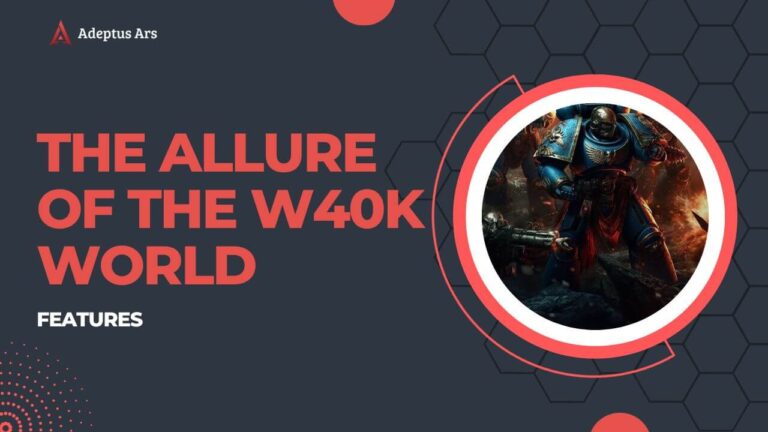Join me as we journey through the warp and time, exploring the captivating saga of Warhammer 40,000 – a game that has not only conquered my heart but the hearts of millions worldwide.
Together, we’ll delve into its origins, the artistry of its miniatures, the strategy behind its expansions, its influence on pop culture, its global footprint, the heartbeat of its community, the challenges it’s faced, and the promising horizons that await.
From humble beginnings to global powerhouse
Warhammer 40,000, affectionately known as 40K, is more than just a game—it’s a legacy. But how did this tabletop wargame, set in a dystopian universe, rise to such prominence?
Let’s journey back to its inception and trace its meteoric rise.
Launched by the UK-based company, Games Workshop in 1987, Warhammer 40,000 was a successor to the original Warhammer Fantasy game.
Set in a grimdark future, it introduced players to a universe where there is only war. The rich lore, combined with intricate miniatures, set the stage for a game that would capture the hearts of many.
While the world was grooving to Michael Jackson’s “Bad” and watching “The Princess Bride” in theaters, a small group at Games Workshop was brewing something… different.
Amidst the neon lights and pop culture frenzy of the late 1980s, this dedicated team was meticulously crafting a universe that would captivate the imaginations of countless fans for decades to come.
Unbeknownst to anyone, Games Workshop was laying the foundation for a tabletop legacy, one that would transcend time and redefine the world of miniature wargaming.
This endeavor would soon give birth to Warhammer 40,000, a game that not only mirrored the complexity and depth of its creators’ vision but also became a cultural phenomenon in its own right.
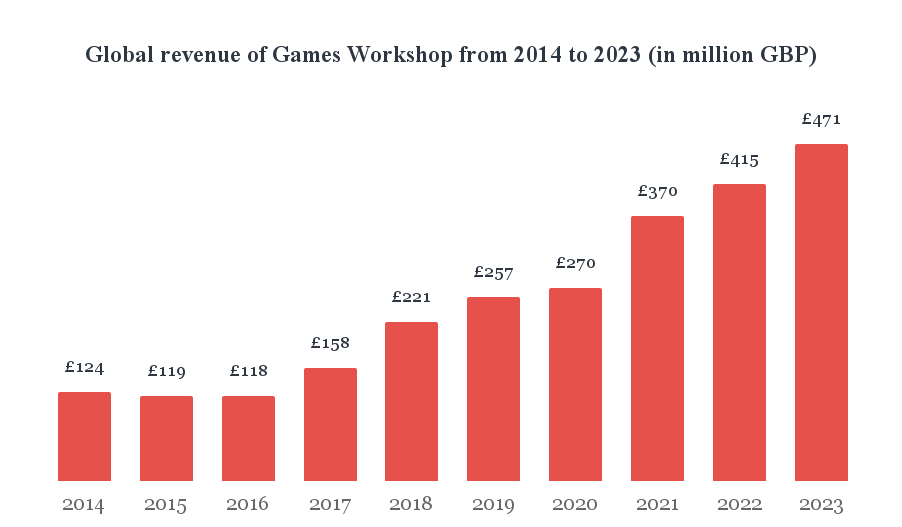
The game, set in a dystopian future marked by interstellar wars and cosmic horrors, quickly garnered a dedicated following. Its intricate lore, detailed miniatures, and strategic gameplay offered an immersive experience that stood in stark contrast to the fleeting trends of the era.
As the world moved from vinyl records to digital music and from VHS to streaming, Warhammer 40,000 remained a constant, evolving and expanding, yet always rooted in its rich history.
Conventions began to spring up worldwide, dedicated solely to the game, and fan-made content flooded the internet, showcasing the depth of passion and creativity the game inspired.
From basement gaming sessions to international tournaments, the influence of Warhammer 40,000 was undeniable, proving that while pop culture icons may come and go, some legacies are built to last.
However, as the game’s popularity grew, so did its production quality. The miniatures became more detailed, the lore expanded, and the game mechanics became more sophisticated. This evolution justified the subsequent price increases.
Today, a single miniature can cost anywhere from $30 to $150, depending on its size and complexity.
The 2023 Leviathan box launched together with the game’s 10th edition has a list price of $250.
Consider the iconic Space Marine, the poster child of 40K. In the late 1980s, a set of these might have cost a gamer around $10. Today, a box of Primaris Space Marines, the newer and more detailed counterparts, can set a player back by approximately $60.
The pricing strategy of Warhammer 40,000 is a testament to its brand value. As the game offered more to its players—in terms of quality, gameplay experience, and lore—the players were willing to pay a premium.
It’s a classic example of how perceived value can drive pricing in a market.
Warhammer 40,000 made Games Workshop a truly global company!
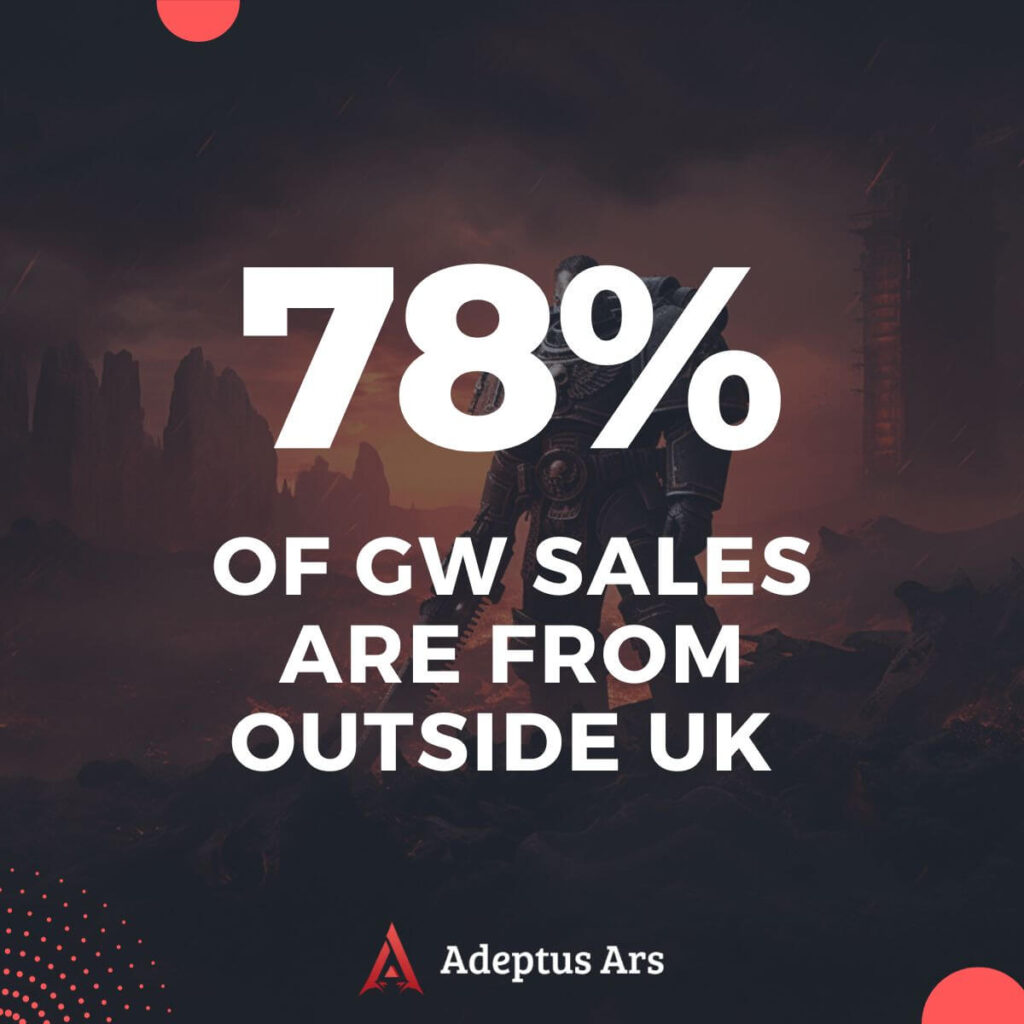
Today, Games Workshop operates as a global enterprise, with its central headquarters located in Nottingham. Impressively, a significant 78% of the company’s sales are generated from international markets outside the UK (source).
This is even more impressive considering the company’s two primary manufacturing plants, a dedicated paint factory, dual warehouse facilities, and design studios are still based in or around Nottingham.
The saga of Warhammer 40,000 isn’t just about a game. It’s about passion, evolution, and a community that turned an underdog into a legend.
As we’ve seen, the game’s rise to fame is nothing short of spectacular. But what about the very heart of this universe—the miniatures? Let’s delve deeper into the world of these intricate figures that have become synonymous with Warhammer 40,000.
The art of Warhammer 40,000 miniatures
Having explored the meteoric rise of Warhammer 40,000, it’s impossible not to be captivated by the game’s most tangible aspect: the miniatures.
These aren’t mere game pieces; they’re the soul of the Warhammer 40k universe.
Every Warhammer 40,000 miniature is a testament to artistic excellence. From the menacing grimace of an Ork Warboss to the regal stance of an Eldar Farseer, each figure tells a story.
An evergrowing community of artists
Beyond the official designs, today there’s a thriving community of hobbyists who breathe life into these figures with their paintbrushes.
Across the world, enthusiasts gather in workshops, cafes, and homes, sharing techniques, showcasing their creations, and celebrating the art of miniature painting.
Moreover, the Warhammer community has seen a surge in “painting-only” enthusiasts—individuals who are drawn to the hobby primarily for the artistic aspect, even if they don’t play the game!
sharing their vision with fellow enthusiasts. From dioramas depicting epic battles to custom-painted figures that redefine the aesthetics of factions, these events are a feast for the eyes.
The Legendary ‘Eavy Metal Painters
The ‘Eavy Metal group came into existence in the early 1980s, spearheaded by Bryan Ansell, one of the co-founders of Games Workshop.
Originally, they operated out of “The Heavy Metal Factory” situated in Nottingham, England. Their primary mission was to craft exquisitely painted miniatures for various Games Workshop tabletop games.
Swiftly, the team became renowned for their unparalleled painting prowess and meticulousness. They birthed many legendary figures and personas within the Warhammer realm, notable examples being the Space Marine leader, Captain Gabriel Angelos, and the stealthy Skaven killer, Deathmaster Snikch.
Beyond just painting figures, the ‘Eavy Metal crew also enriched Games Workshop’s printed materials, such as the White Dwarf magazine and various army guides. Through their articles and painting tutorials, they ignited the passion of countless hobby enthusiasts.
Some notable member of the team included:
- Mike McVey
- Mark Gibbons
- Dave Andrews
- Aly Morrison
- John Blanche
- Jes Goodwin
- Phil Lewis
- Colin Dixon
These individuals have made significant contributions to the ‘Eavy Metal team and have been instrumental in shaping the artistic direction and standards of Warhammer miniatures.
Golden Demon: A Celebration of Artistry
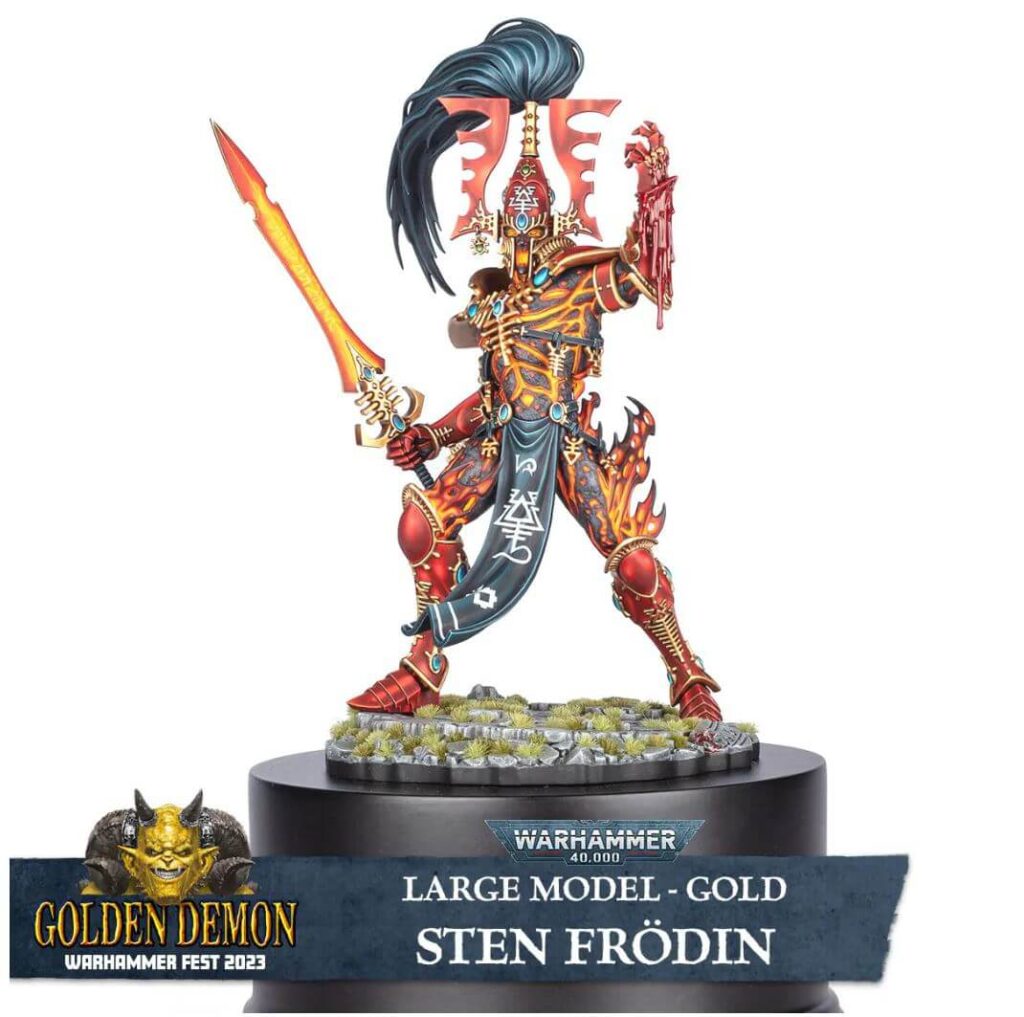
Events like the Golden Demon competition highlight the pinnacle of this art form. Here, painters from all walks of life showcase their masterpieces, competing not just for accolades but for the sheer joy of sharing their vision with fellow enthusiasts.
From dioramas depicting epic battles to custom-painted figures that redefine the aesthetics of factions, these events are a feast for the eyes.
A global celebration of talent
Over the years, the Golden Demon competition has become synonymous with excellence in miniature painting. The meticulous attention to detail, innovative techniques, and storytelling through paint have set the standard for what’s possible in the realm of miniature artistry.
It has also become a truly global event, gathering thousands of artists from around the globe!
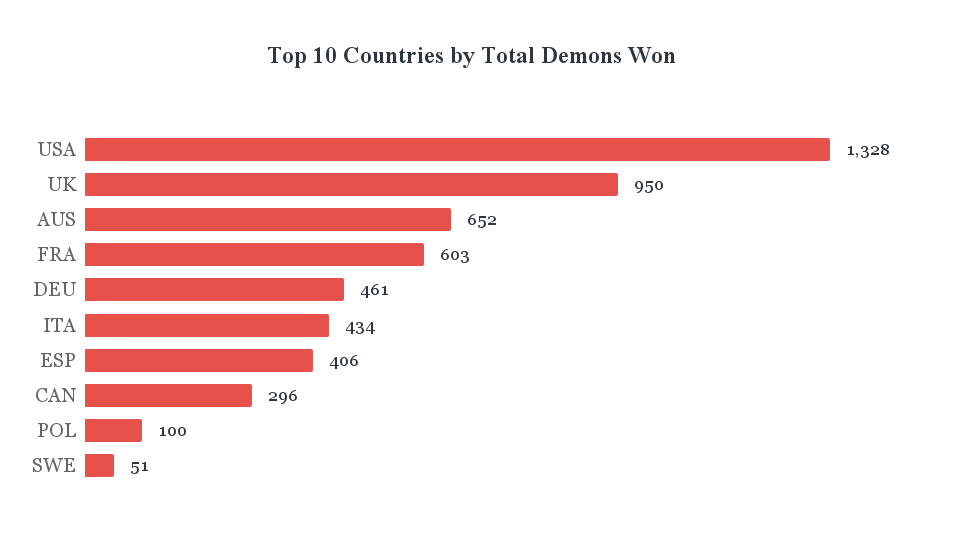
Organized by Games Workshop, this competition is more than just a contest—it’s a rite of passage for miniature artists. At its climax, the most coveted award, the Slayer Sword, is bestowed upon the artist behind the best-painted miniature.
This trophy, a majestic replica broadsword, is traditionally received with a chainmail glove, symbolizing the honor and legacy it carries.
Winning the Slayer Sword is not just an accolade; it’s a recognition of unparalleled skill and artistry in the miniature painting realm.
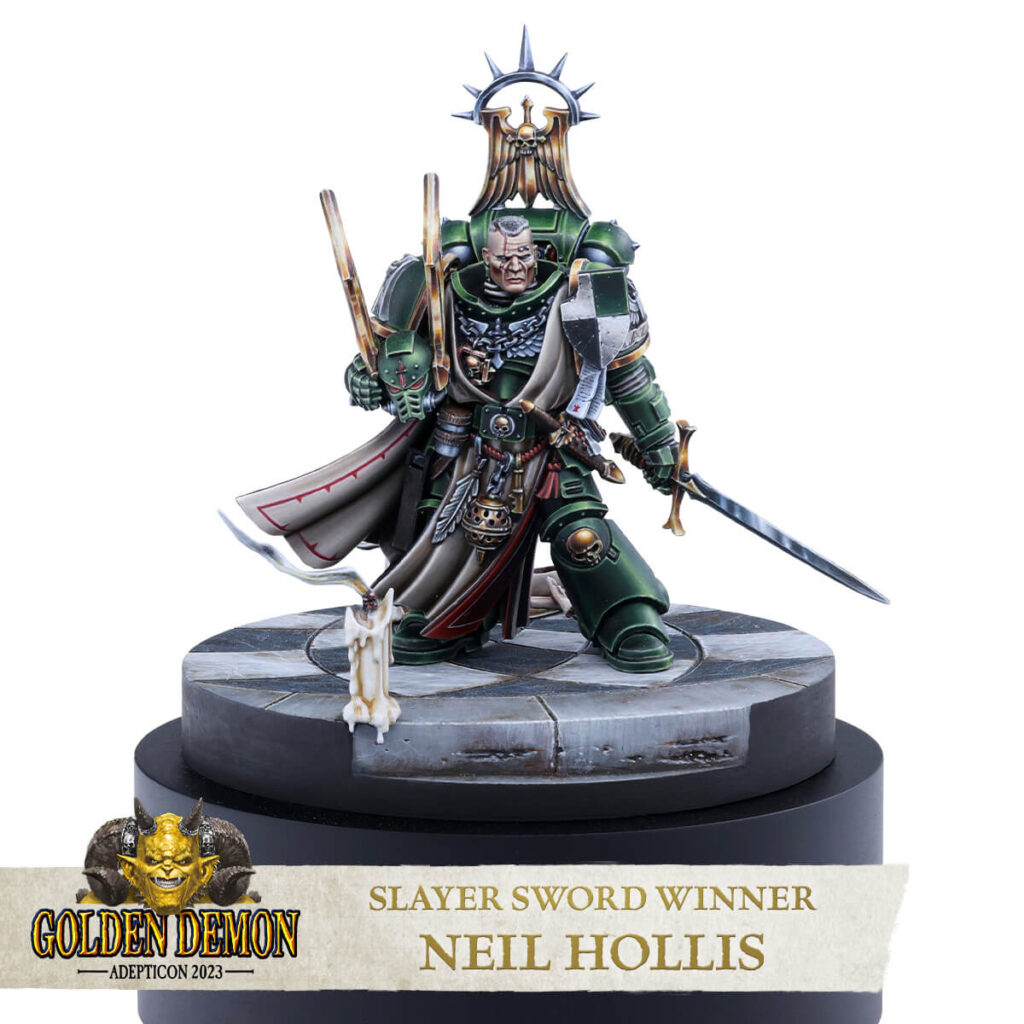
The Slayer Sword winner for the Golden Demon competition in 2023 was Neil Hollis. He was recognized for his exceptional painting of Master Lazarus of the Dark Angels.
Expansions and special editions: Warhammer 40,000’s ever-expanding universe
Having delved into the origins of Warhammer 40,000 and the artistry of its miniatures, one might wonder: what keeps the flame of passion burning so brightly for its dedicated fanbase?
The answer lies in the game’s ability to evolve, reinvent, and expand. Welcome to the world of expansions and special editions—a masterstroke that has ensured Warhammer 40,000’s place in the annals of gaming history.
In a universe as vast as Warhammer 40,000’s, there’s always room for more stories, battles, and characters. Games Workshop recognized this early on, introducing expansions that added new layers to gameplay, lore, and strategies. These aren’t mere additions; they’re entire universes waiting to be explored.
From a business perspective, expansions and special editions serve a dual purpose. They reinvigorate the game for veteran players while attracting newcomers eager to dive into the latest chapters of the Warhammer saga.
And let’s not forget the limited editions—coveted treasures that fans will queue for hours to claim.
Notable expansions that generated a lot of buzz
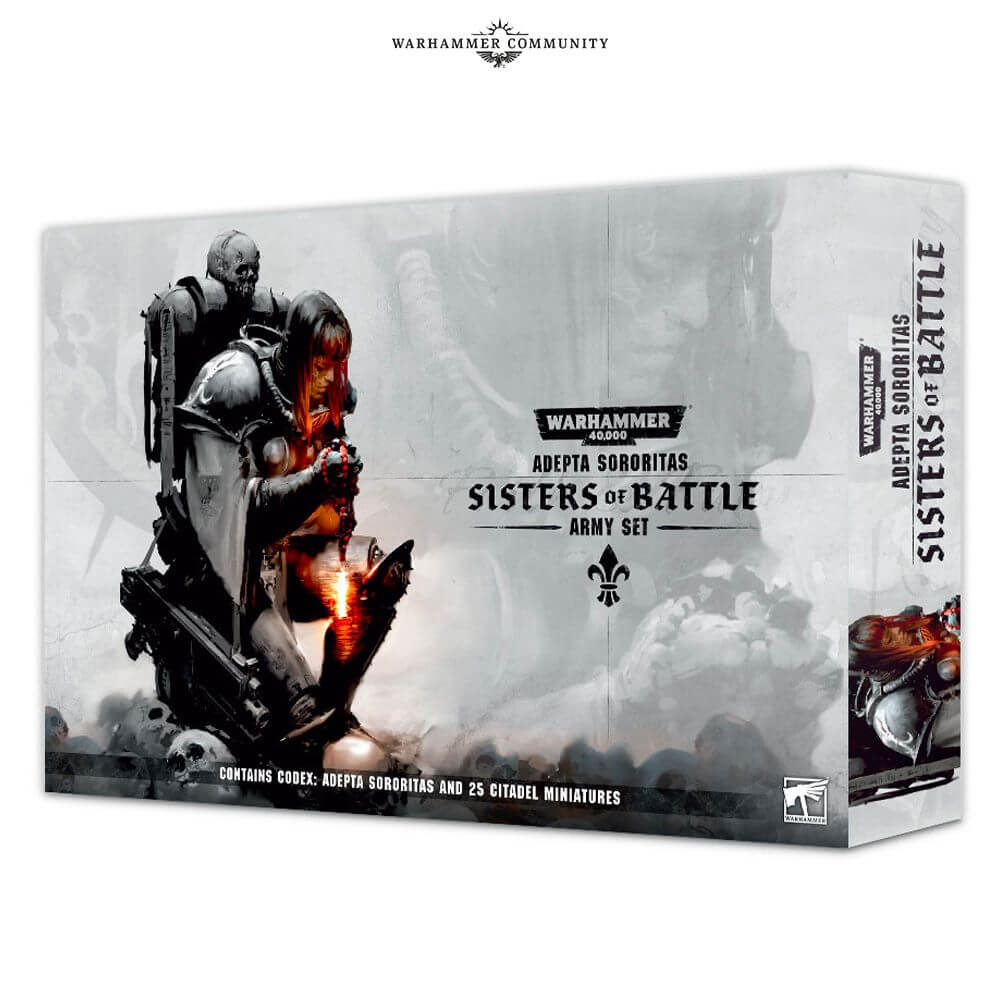
- Indomitus Boxed Set: Released for the 9th edition of Warhammer 40,000, the Indomitus boxed set was a limited edition and sold out within minutes of its pre-order release. This set was particularly notable because it introduced new units for both the Space Marines and Necrons. Source.
- Lion El’Jonson: A highly anticipated model, Lion El’Jonson, the Primarch of the Dark Angels, saw its pre-orders crash the Games Workshop webstore due to the overwhelming demand. The model sold out rapidly, and scalpers were soon reselling copies on platforms like eBay at significantly higher prices.
- Warhammer 40k: Leviathan Boxed Set: This set was in high demand and sold out quickly. Despite the surging demand, Games Workshop confirmed that it wouldn’t go made-to-order.
- Sisters of Battle Army Set: When the Adepta Sororitas, or Sisters of Battle, received a long-awaited update, the initial army set sold out almost immediately. The buzz was not just about the new models but also the lore and the updated rulebook that came with the set. Source.
These releases highlight the immense popularity and demand for Warhammer 40,000 products. Each new release or update not only brings new gameplay elements but also adds to the rich tapestry of lore that has been woven over decades.
Merchandising beyond the tabletop: How Warhammer 40,000 conquered pop culture
The grimdark future of Warhammer 40,000 is teeming with stories, characters, and epic battles—too vast to be confined to a game. Recognizing this, Games Workshop ventured into novels, video games, and even apparel, allowing fans to immerse themselves in their beloved universe in myriad ways.
Enter the Black Library
The Black Library, Games Workshop’s publishing arm, has churned out countless novels, bringing the lore to life. Series like “Horus Heresy” have become must-reads for fans, offering deeper dives into the universe’s history.
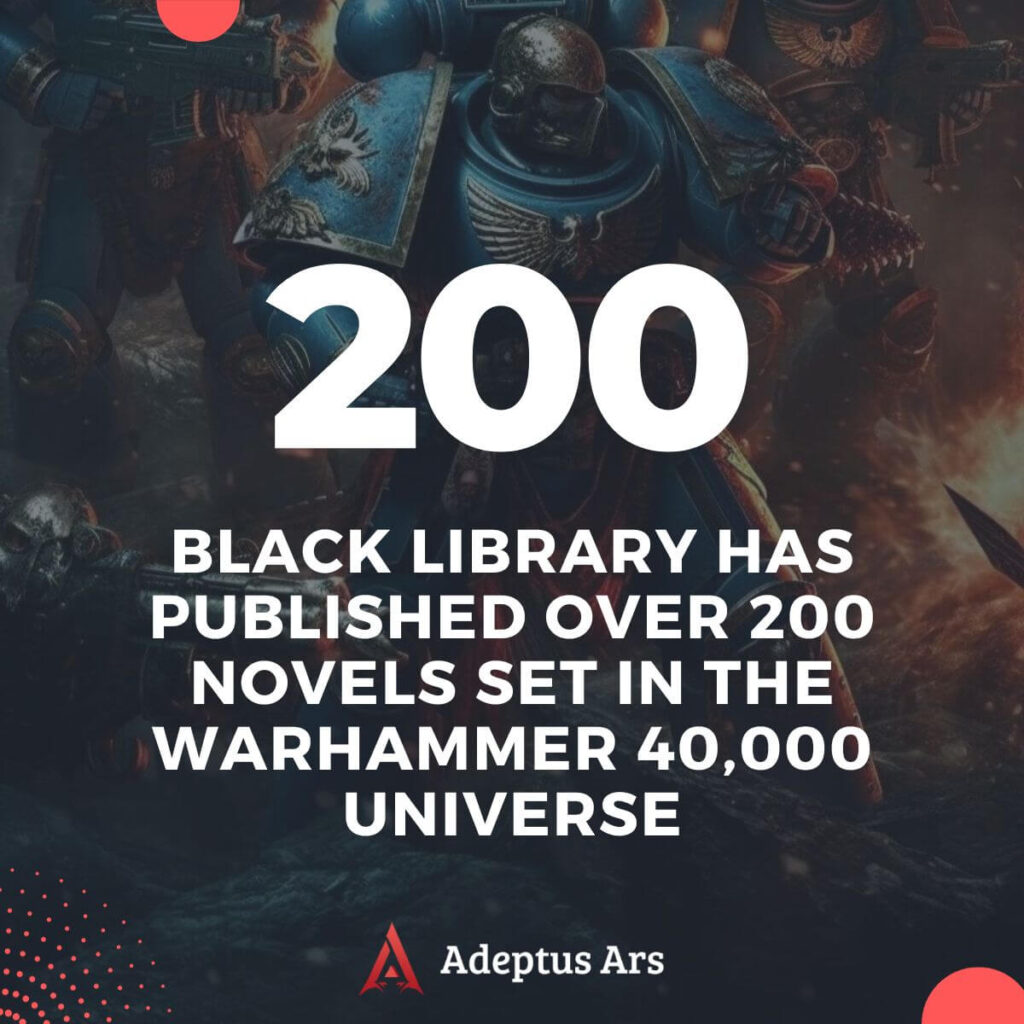
Here are some of the top bestsellers from Black Library:
- Sabbat War
- Urdesh: The Serpent and the Saint
- Mortis – The Horus Heresy: Siege of Terra Book 5
- Dark Imperium
- Godblight
- Plague War
From Tabletop to Pixels
The Warhammer 40,000 universe, with its rich lore and intricate battles, has always been a tantalizing prospect for video game adaptations. Over the years, this tabletop titan has made significant inroads into the digital domain, offering fans and newcomers alike a chance to immerse themselves in its grimdark future.
From real-time strategy games to action-packed shooters, the Warhammer 40,000 IP has been explored through various genres.
Titles like Dawn of War and its sequels brought the strategic depth of tabletop battles to PC gamers, allowing them to command vast armies and partake in epic conflicts.
On the action front, Space Marine offered a visceral experience of the universe, putting players in the boots of an Adeptus Astartes.
Building on its success, the highly anticipated sequel, “Space Marine 2,” promises to delve deeper into the lore, bringing more intense battles and a richer narrative to fans.
Warhammer 40,000 Video Games of 2023
- Boltgun: A retro-inspired FPS where players assume the role of a Space Marine in a ’90s themed shooter. The game features iconic 40k weapons like boltguns and chainswords, and players battle against foes like Chaos and Orks.
- Release date: May 23, 2023
- Release date: May 23, 2023
- Space Marine 2: A sequel to the popular “Space Marine” series, this game pits the Ultramarines against the Tyranid horde. The campaign features Titus and offers a 3-person co-op mode.
- Release date: 2023 (Specific date not mentioned)
- Release date: 2023 (Specific date not mentioned)
- Warhammer 40,000: Warpforge: This is a collectible card game battler that brings together all the major factions of the 40k universe. It’s a free-to-play game.
- Release date: 2023 (Specific date not mentioned)
- Release date: 2023 (Specific date not mentioned)
- Warhammer 40,000: Speed Freeks: Announced during the 2023 Skulls event, this game combines racing and combat where Orks battle on racetracks spread across the universe. The release date hasn’t been confirmed yet, but an alpha playtest is available.
On the mobile realm, the market has seen a surge in Warhammer 40,000 titles. Games like Warhammer 40,000: Freeblade have brought the universe to the pockets of millions, allowing fans to engage with the lore and battles on the go
Warhammer 40,000’s global domination: conquering hearts across continents
While Warhammer 40,000 originated in the UK, its themes of galactic warfare, heroism, and intricate lore found resonance with audiences worldwide.
The universality of its narrative, combined with a strategic gameplay experience, made it a hit, whether in the bustling streets of Tokyo or the quiet neighborhoods of Stockholm.
Games Workshop recognized the importance of catering to different markets. This meant not just translating rulebooks, but also understanding regional preferences and adjusting marketing strategies.
Special editions, regional tournaments, and even exclusive miniatures have been part of the company’s strategy to appeal to diverse audiences.
Spotlight on China
In recent years, China has emerged as a significant market for Warhammer 40,000. With a growing middle class and an increasing interest in tabletop gaming, Games Workshop has made concerted efforts to establish its presence there, from opening flagship stores to hosting massive tournaments.
The digital adaptations of Warhammer 40,000 have played a crucial role in introducing the universe to the Chinese audience. Games like Warhammer 40,000: Lost Crusade made by Nuverse, have been launched outside of Mainland China, making the lore and gameplay accessible to a broader audience.
Collaborations with global giants
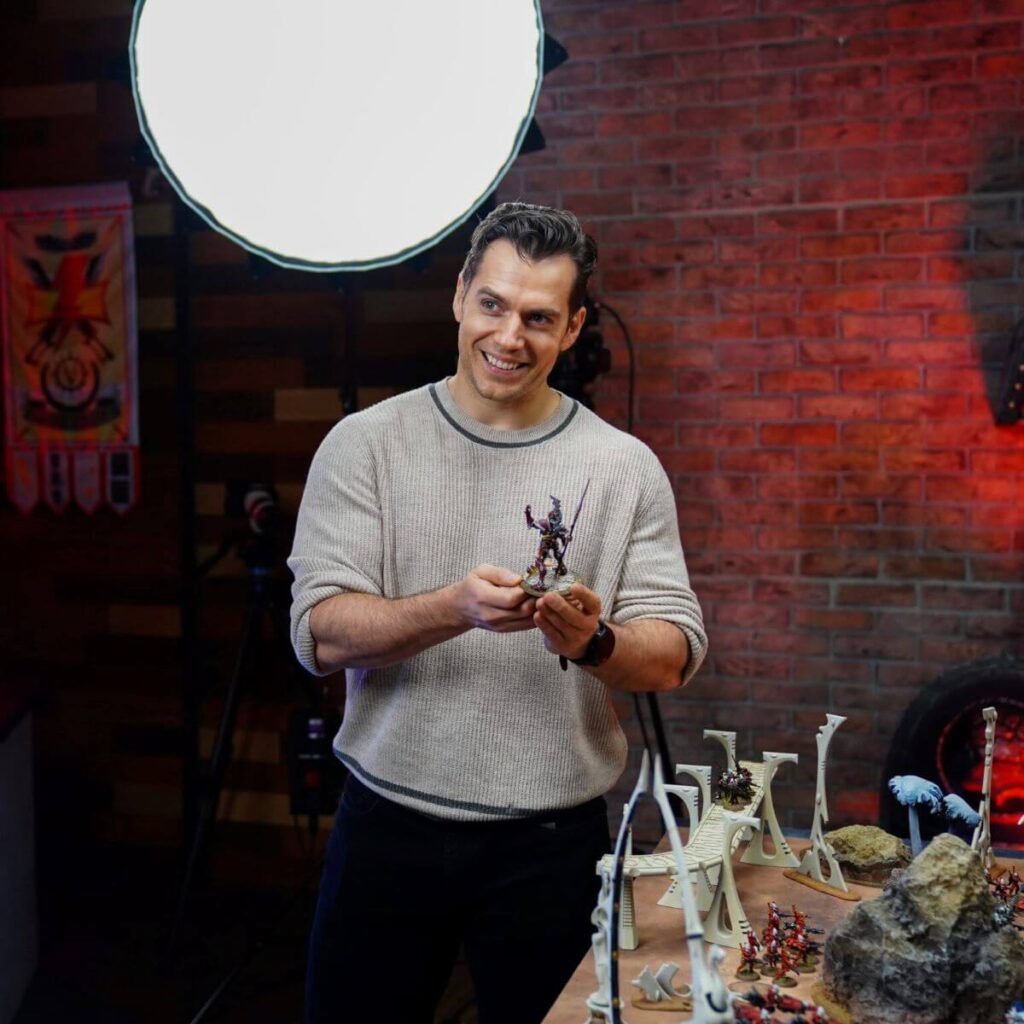
Recent collaborations have further boosted the profile of Warhammer 40,000 globally. Amazon’s recent endeavor to bring the popular miniature game Warhammer 40,000 to screens, featuring the former “Superman” actor Henry Cavill, is a testament to the game’s global appeal.
Such high-profile collaborations are bound to generate buzz and attract new fans to the franchise. Source.
Challenges and Criticisms
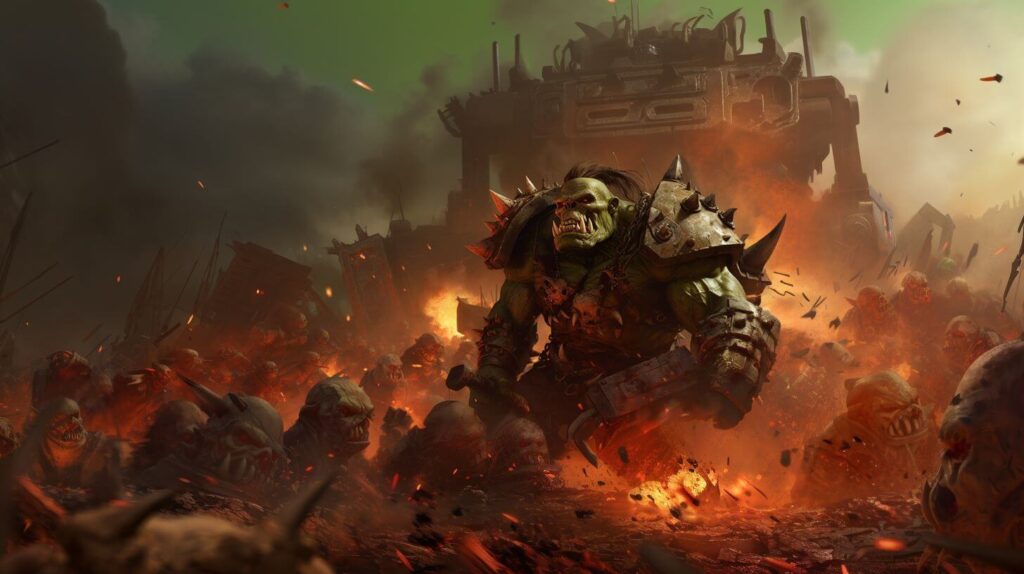
Every epic tale has its trials and tribulations, and the saga of Warhammer 40,000 is no exception. While the game has soared to incredible heights, fueled by a passionate community and a rich, expansive universe, it has also faced its share of challenges.
Pricing Concerns
One of the most common criticisms revolves around the pricing of miniatures and starter sets. Many fans feel that the cost of entry into the hobby has become prohibitively expensive, especially for newcomers.
This sentiment is particularly strong when new editions are released, often accompanied by new, pricier miniatures.
For instance, a detailed breakdown on Creative Twilight highlights the potential costs of starting and maintaining a Warhammer 40K collection, emphasizing that while it’s not the most expensive hobby, it’s certainly not cheap.
Complexity and rule changes
With each new edition of Warhammer 40,000, there are updates and changes to the rules. While this is expected to some degree, some players feel that the game has become overly complex.
Additionally, frequent rule changes can make it challenging for casual players to keep up, leading to feelings of exclusion.
This sentiment is often echoed in W40k forums and discussion boards where players express their frustrations with keeping up with the ever-evolving rulebook.
Lore and canon inconsistencies
Given the vastness of the Warhammer 40,000 universe and its decades-long history, there have been instances of inconsistencies or retcons in the lore.
While some fans appreciate the evolving narrative, others feel that these changes can undermine established stories or character arcs.
Here’s a few examples of inconsistencies:
- The Age of the Primarchs: One of the most debated inconsistencies revolves around the age of the Primarchs during the Horus Heresy. In some sources, it’s suggested that the Primarchs were discovered over the span of a few years, while other sources suggest it took much longer, possibly decades.
- The Necron Lore Overhaul: The Necrons underwent a significant lore change between the 3rd and 5th editions of the game. Originally, they were portrayed as mindless, terminator-like robots serving the C’tan, ancient star gods. However, in later editions, the Necrons were given more agency, with the C’tan being shattered into shards and used as weapons by the now-sentient Necron dynasties.
- Squats: The Squats, a race of space dwarves, were originally part of the Warhammer 40,000 universe. However, they were largely written out of the lore and declared “eaten by the Tyrranids.” This decision was controversial, and references to the Squats have been sparse in later editions, though today they’ve made a comeback as the Leagues of Votann!
- The Changing Nature of Chaos: The portrayal of Chaos and its gods has evolved over time. Earlier editions presented the Chaos gods as more neutral entities, representing both positive and negative aspects of their respective domains. However, later editions have emphasized the more malevolent and destructive aspects of Chaos.
- Legion Sizes: The sizes of the Space Marine Legions during the Horus Heresy have been a point of contention. Early lore suggested numbers in the thousands, but as the narrative scope of the Heresy expanded, so did the Legion sizes, with some sources suggesting they numbered in the hundreds of thousands.
- The Emperor’s Origins: The backstory of the Emperor of Mankind has been shrouded in mystery, with various sources providing different accounts of his origins. Some suggest he was born from the souls of ancient shamans, while others hint at a more scientific or even alien origin.
To wrap things up!
The saga of Warhammer 40,000 isn’t just about a game. It’s about passion, evolution, and a community that turned an underdog into a legend. As we’ve seen, the game’s rise to fame is nothing short of spectacular.
As we’ve journeyed from the game’s inception to the intricacies of its miniature market, one thing remains clear: Warhammer 40,000 is not just a pastime—it’s a legacy that continues to grow, one miniature at a time.
If you managed to get this far, you might also want to read my piece about all the reasons why W40k is set to launch the next big cinematic universe!

